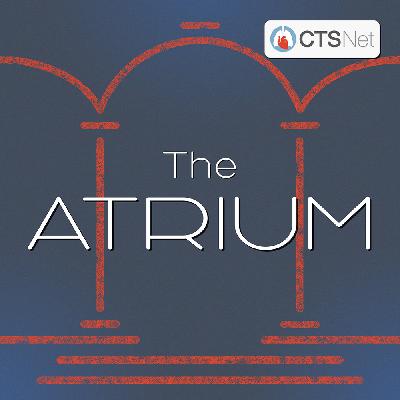The Beat With Joel Dunning Ep. 121: Managing LVOT Obstruction With Minimal Septal Hypertrophy
Description
This week on The Beat, CTSNet Editor-in-Chief Joel Dunning speaks with Dr. Nicholas Smedira, a cardiac surgeon at the Cleveland Clinic, about mitral valve-induced left ventricular outflow tract (LVOT) obstruction with minimal septal hypertrophy.
Chapters
00:00 Intro
02:25 JANS 1, Transcervical Robotic AVR
07:49 JANS 2, Post Cor-Knot vs Manual Tying
10:18 JANS 3, Valve Therapy vs Volume Reduction
12:55 JANS 4, Cardiac Early Extraction vs Management
15:17 Career Center
16:18 Video 1, Repair of Ruptured RCAA
17:57 Video 2, Right Atrial Myxoma from IVC Junction
20:05 Video 3, Modified Re-Do Commando
22:43 Dr. Smedira Interview
45:44 Upcoming Events
46:58 Closing
They discuss the importance of understanding the anatomy and physiology of the papillary muscles, as well as flow vortices. They also cover various techniques for mitral valve repair and replacement, emphasizing the importance of making the leaflet coaptation zone as posterior as possible. Additionally, they explore how learning techniques for mitral valve-induced LVOT obstruction with minimal septal hypertrophy have evolved through exposure and experience.
Joel also highlights recent JANS articles on the world's first transcervical robotic AVR procedures successfully performed in four Cleveland Clinic patients, a comparison of outcomes post Cor-Knot vs manual tying in valve surgery, endobronchial valve therapy vs lung volume reduction surgery in the United States, and early extraction vs conservative management in patients with noninfected cardiac implantable electronic devices undergoing cardiac surgery for left-sided infective endocarditis.
In addition, Joel explores the repair of a ruptured right coronary artery aneurysm, removal of a right atrial myxoma from the IVC junction with patch repair using the left atrial appendage, and a modified redo Commando procedure in a patient with septic shock due to aortic and mitral valve endocarditis. Before closing, Joel highlights upcoming events in CT surgery.
JANS Items Mentioned
3.) Endobronchial Valve Therapy Versus Lung Volume Reduction Surgery in the United States
CTSNET Content Mentioned
1.) Repair of Ruptured Right Coronary Artery Aneurysm
Other Items Mentioned
2.) Cardiac Surgical Arrest—An International Conversation Series
Disclaimer
The information and views presented on CTSNet.org represent the views of the authors and contributors of the material and not of CTSNet. Please review our full disclaimer page here.
















